1. He Was Born In Lubavitch on 12 Tammuz, 1880
Rabbi Yosef Yitzchak Schneersohn, the sixth Chabad Rebbe, was born on the 12th day of the summer month of Tammuz in 5640 (1880), in the village of Lubavitch, which had been the seat of the movement since 1813.
In 1883, his father, Rabbi Shalom Dov Ber, became the Rebbe. For much of Rabbi Yosef Yitzchak’s childhood, his father was away attending to communal affairs and advocating on behalf of Russia’s downtrodden Jews.
An only child, he formed a deep relationship with his grandmother, Rebbetzin Rivka, wife of the fourth Rebbe, Rabbi Shmuel of Lubavitch.
Read: A Rebbe’s Education

2. He Is Known as Both the Rayatz and the Frierdiker Rebbe
Like his father, grandfather, and other relatives, he was known by the acronym of his title and name, RaYYaTZ, for Rabbi Yosef Yitzchak. Following his passing and the ascension of the seventh Rebbe to the leadership of Chabad, he became known as the Frierdiker Rebbe, Yiddish for “Previous Rebbe.”

3. He Wrote Extensively and Descriptively
Encouraged by his childhood teacher, R. Nissan, Rabbi Yosef Yitzchak wrote copious journals. He chronicles the stories he heard from his father, his teachers, his grandmother, and elder Chassidim, as well as the events of his life.
Blessed with rich and colorful prose, he used Yiddish and Hebrew to deftly paint compelling portraits of Chassidic life in bygone years, as well as his own lifelong travails and triumphs on behalf of Judaism.
Browse the Writings and Teachings of R’ Yosef Yitzchak

4. He Was Dean of Tomchei Temimim
At the age of 15, he was appointed his father’s personal secretary, a position that took him to rabbinical convocations, political conferences, and the sundry other public activities of his father. On the 13th day of Elul 5657 (1897), at the age of seventeen, Rabbi Yosef Yitzchak Schneersohn married Nechamah Dinah Schneersohn, his distant relative. During sheva brachot (post-wedding celebrations), it was announced that Tomchei Temimim, the flagship Chabad yeshivah, would open in Lubavitch with Rabbi Yosef Yitzchak as director. The yeshivah and its branches produced hundreds of learned and faithful rabbis and lay-leaders, whose dedicated leadership would serve to preserve Judaism in the difficult years that lay ahead.
Read: The History of Tomchei Temimim in 11 Images

5. He and His Wife Had Three Daughters
Rabbi Yosef Yitzchak and his wife were blessed with three daughters. His middle daughter, Chaya Mushka, married Rabbi Menachem Mendel Schneerson (who would become the seventh Rebbe) in 5689 (1928).
6. He Became Rebbe During a Tumultuous Time
The Bolshevik Revolution ushered in a dark and terrible era for Jews in the newly-formed Soviet Union. Synagogues and Jewish schools were shuttered, and anyone who dared to try to preserve Judaism was arrested and sentenced to harsh labor or worse. On the second day of Nissan, 5680 (1920), Rabbi Shalom Dov Ber passed away, leaving his son to guide Russian Jewry through what was becoming an increasingly desperate situation. People expected him to shy away from the task, but Rabbi Yosef Yitzchak bravely led Russian Jewry as they fought for their very existence.
Within a few years, he had founded new synagogues, mikvahs, and yeshivahs, including one in Bukhara for Sephardic scholars.
Read: Giving Chabad New Life
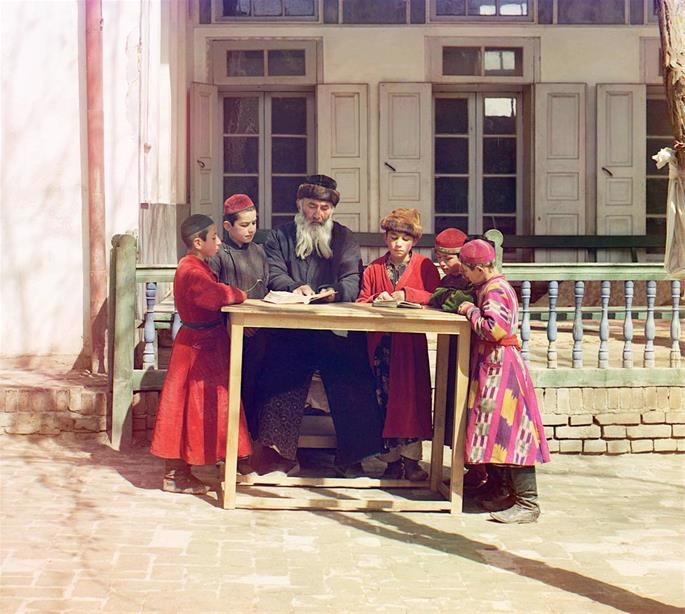
7. He Was Sentenced to Death
Even as Chassidim were being arrested and sentenced to hard labor or the firing squad, Rabbi Yosef Yitzchak encouraged them to soldier on, leading by his own unrelenting example. He founded a broad network of clandestine Jewish institutions across the expanses of the Soviet Union, as well as in Poland and the US.
He and his army of scholars-turned-outlaws played cat-and-mouse with the Soviet Secret Police and their willing lackeys, the Yevsektsiya (Jewish section of the Soviet Communist Party, who were eventually also terminated by Stalin once they were deemed no longer useful).
In 1927 the Rebbe was arrested in his Leningrad home and placed in solitary confinement in the infamous Spalerno Prison, charged with counterrevolutionary activities. It was the seventh time he had been imprisoned—five times by the Czarist government and once before by the Soviets—but the charges were far more severe than before, and the Rebbe was sentenced to death.
After a flurry of international outcry, the sentence was commuted to 10 years of hard labor in the Solovetsky Island prison camp—described as “the mother of the Gulag”—then to three years of exile in Kostroma, some 300 km to the northeast of Moscow.
Then on the 12th of Tammuz, his 47th birthday, he was informed that he was free. The day has become enshrined as a day of thanksgiving and celebration in Chabad.
Read: 13 Powerful Pictures That Illuminate the Arrest and Liberation
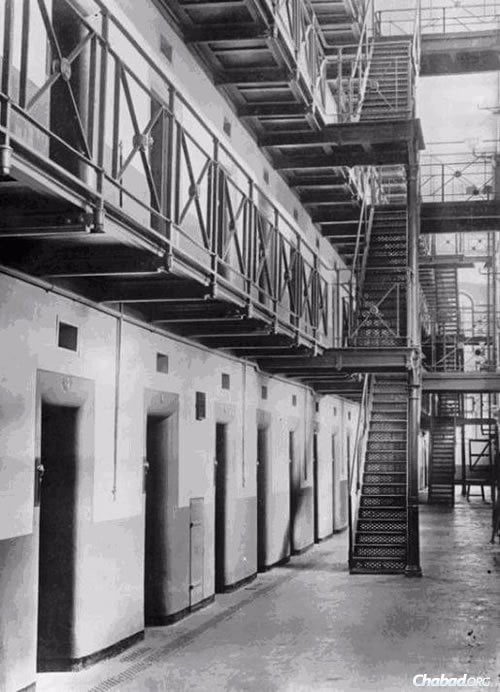
8. He Was the Only Chabad Rebbe to Visit the Holy Land
Several months after his release, Rabbi Yosef Yitzchak and his family left the Soviet Union for Riga, Latvia, where he set about establishing a local yeshivah, while maintaining clandestine channels of contact and support for the Jews trapped in the Soviet Union.
While in Russia, the Rebbe would pray regularly at the resting places of his ancestors, the Rebbes of Chabad. In 1929 he traveled to the Holy Land to pray at the sacred places there, the Kotel, the Cave of the Patriarchs, and the graves of the great sages of years past.
Great crowds gathered to greet him at every turn, eager to interact with and receive a blessing from the saintly hero who had stood up to the Communist behemoth and come out on top.
He visited the Jewish community of Hebron, which had a long and storied presence, and was ushered into the Cave of Patriarchs. He left two days before the Arab riots of 1929, in which scores of Jews were massacred in Hebron and Jerusalem. Among the nearly 70 victims were several of the rebbe’s relatives and disciples.
Read: Cause and Effect

9. He Was the Only Rebbe to Meet a US President
From the Holy Land, the Rebbe came to the United States, where he received an official civic welcome in New York, and was granted the Freedom of the City by the police commissioner, acting on behalf of the mayor. Hundreds of rabbis and lay leaders welcomed the Rebbe and sought personal audiences.
From New York, he visited many cities across the Northeast and the Midwest, traveling as far as Saint Louis and Milwaukee. In each place, he encouraged American Jews to increase their observance and strengthen Judaism.
During this visit, the Rebbe was also received by President Hoover at the White House.
Read: The Sixth Rebbe’s Historic Visit to St. Louis

10. He Empowered Women and Youth
In an era when meaningful communal leadership was largely seen as the arena of men, Rabbi Yosef Yitzchak reached out to women and empowered them to form groups for Torah study, activism and more. While still in Europe, he founded the Achos Hatemimim group for young women. In the US, he encouraged children, boys and girls, to lead dozens of Mesibos Shabbos groups, in which they encouraged their young peers to celebrate Judaism in a fun environment.
Read: A Letter to Mesibos Shabbos Leaders

11. His Teachings Were Heartfelt and Varied
The written legacies of Rabbi Yosef Yitzchak’s antecedents comprise mostly Chassidic treatises accessible to advanced scholars, and sometimes Jewish law (halachah) as well. In addition to advanced teachings, Rabbi Yosef Yitzchak also delivered and wrote simpler treatises (often in Yiddish) aimed at men and women who lacked advanced backgrounds but were sorely in need of authentic Torah learning and inspiration.
Browse the Writings and Teachings of R’ Yosef Yitzchak

12. He Narrowly Escaped Nazi-Occupied Warsaw
Back in Europe, Rabbi Yosef Yitzchak settled in Warsaw, Poland, in 1934, where he had founded a chain of yeshivahs. After Germany declared war on Poland, he survived the blitzing of Warsaw among the huddled and terrified masses. After the Nazis entered the city, Chassidim in the US worked diplomatic channels to bring the Rebbe safely to American shores.
Working from within the echelons of the German leadership, (including Admiral Wilhelm Canaris, the head of the Abwehr, the German intelligence agency,) the efforts were successful, and the Rebbe and his family were spirited to Berlin, to Riga, to Stockholm and then to New York, where they arrived on 9 Adar, 5700 (1940).
Yet the Rebbe left behind two of his daughters. Chaya Mushka and her husband, the future seventh Rebbe, came to America a year later. Shaina, her husband, and son perished in Treblinka.
Watch: Original Footage of His Arrival in America
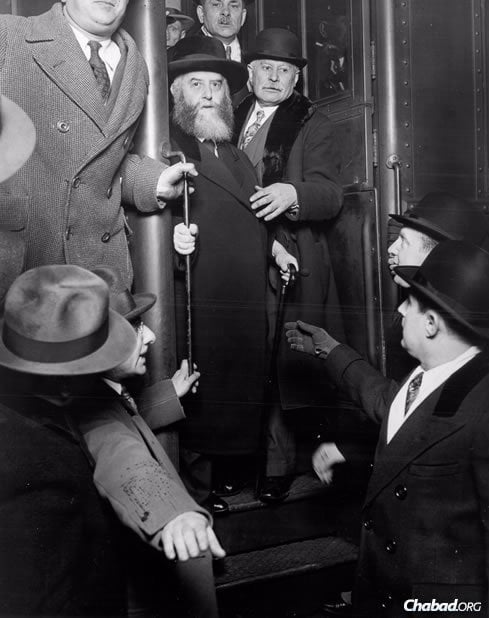
13. He Endeavored Mightily to Build Judaism in America
On his first day in America, well-meaning supporters advised the Rebbe to curb his expectations for Jewish life in the country, where cultural acclimation and the bottom line had displaced Torah and tradition as the guidelines of the Jew. Crying copious tears, the Rebbe declared Amerike iz nit andersh, “America is no different.” That evening, he founded a branch of the Tomchei Temimim yeshivah.
Within a few years, there were branches in cities across the Eastern Seaboard, and the seeds had been sown for Judaism’s regrowth in the Western Hemisphere.
Watch: The Rebbe’s 4 AM Diary

14. The Rebbe Overcame Significant Health Challenges
By the time he arrived in America, he was physically weakened, in part due to abuse he suffered in Russian prison. Wheelchair-bound and unable to speak clearly, the Rebbe was not able to address large crowds as he once had. Nevertheless, through correspondence and personal meetings, he continued to direct a growing chain of institutions and individuals dedicated to spreading and bolstering Judaism everywhere.
Read: The Chicken Farmer and the Man in the Bus Stop

15. His Institutions Led the Way
With the arrival of his son-in-law and future successor, Rabbi Yosef Yitzchak founded three institutions that Rabbi Menachem Mendel led: Merkos L’Inyonei Chinuch (the educational arm of Chabad Lubavitch), Kehot Publication Society, and Machane Israel (the social services division).
Through these institutions, he brought vital Jewish services and connectedness to isolated farmers, small-town merchants and many others.
Throughout the 1940s, he sent yeshivah students to visit smaller communities, bringing literature, ritual items, and a lifeline to Jewish life.
Known as Merkos Shlichus (or Roving Rabbis), the program dispatches hundreds of student groups each summer and before major holidays.
Read: About the Summer Visitation Program

16. His Efforts Extended to North Africa and Beyond
In 1948, the Rebbe established a new Chassidic village in central Israel, Kfar Chabad, primarily for Chassidic Jews who had snuck under the Iron Curtain during the chaos following WWII and were living in DP camps in Western Europe.
Within a short time, it became a bastion of Chassidic warmth and activity, from where Chabad’s efforts extended throughout the Holy Land.
In 1950, just weeks before his passing, he laid the groundwork for Chabad activities in North Africa, which mushroomed into an empire of Jewish life in Tunisia and Morocco, posthumously named “Oholei Yosef Yitzchak” in his honor.
Read: What It’s Like to Be a Chabad Woman in Morocco

17. He Passed Away in 1950
On Shabbat morning, 10 Shevat, 5710 (1950), Rabbi Yosef Yitzchak passed away at the age of 70. His life of mesirat nefesh, setting aside his personal needs and aspirations for the good of his people, spanned continents and perhaps the most tumultuous times. He left a legacy of love, care, and dedication that lives on—particularly as it was expanded and amplified by his successor, the seventh Rebbe.
Read: 10 Images That Tell the Story of the Rebbe's Reluctant Path to Leadership



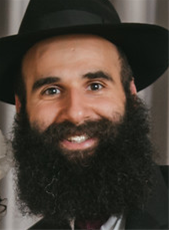

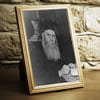

Join the Discussion